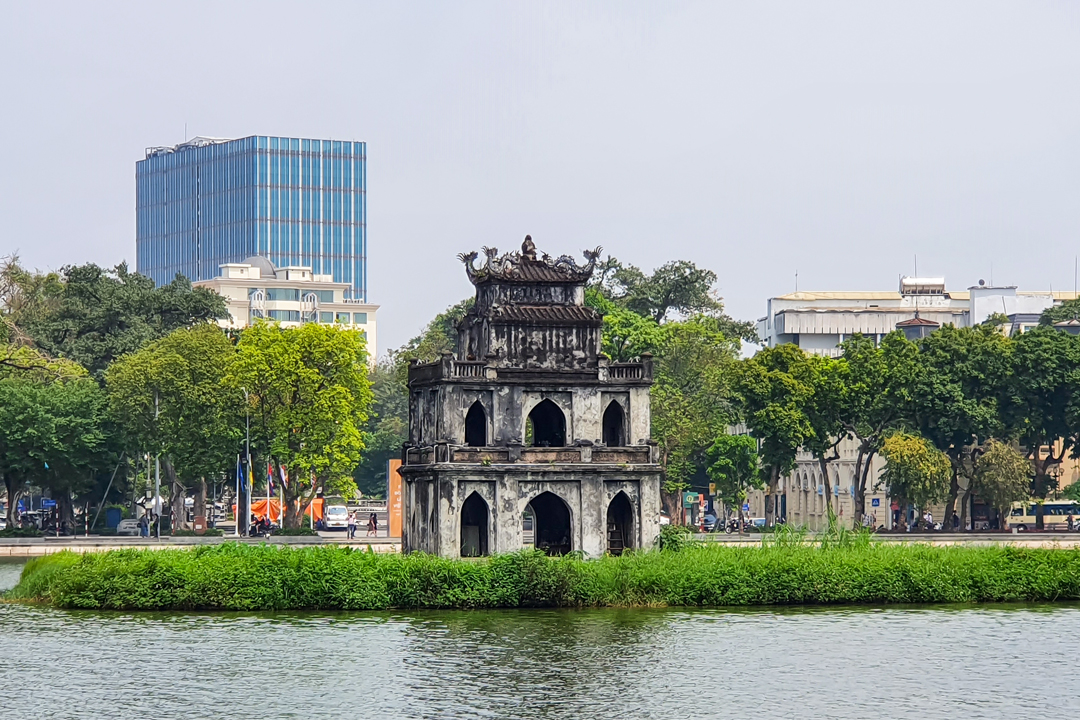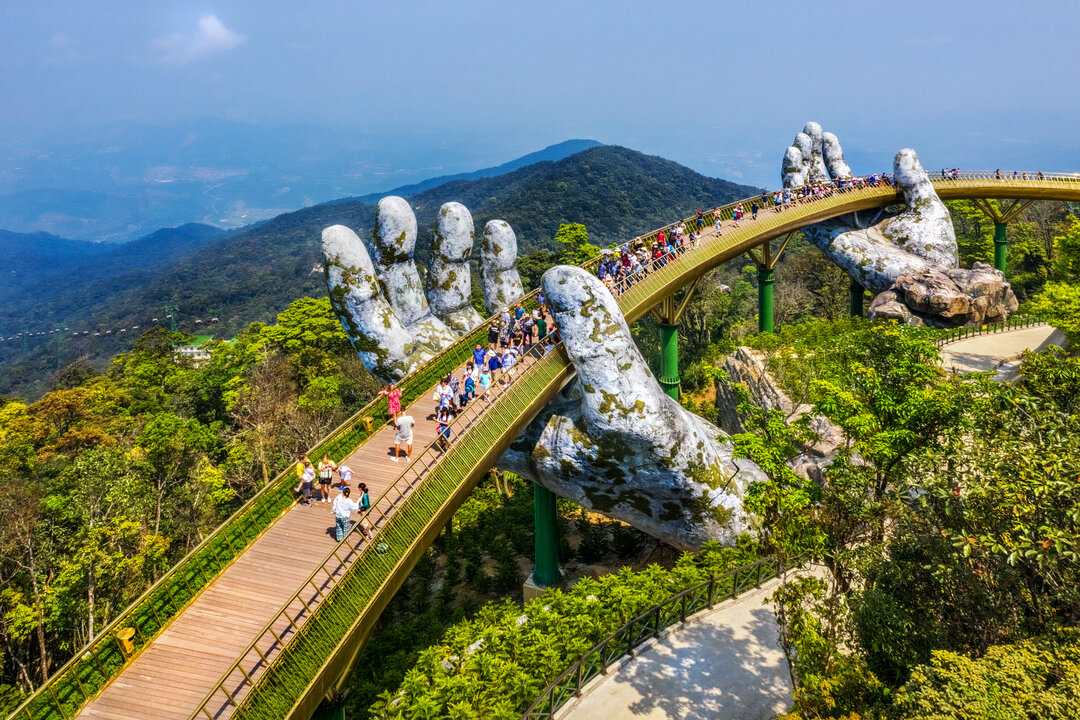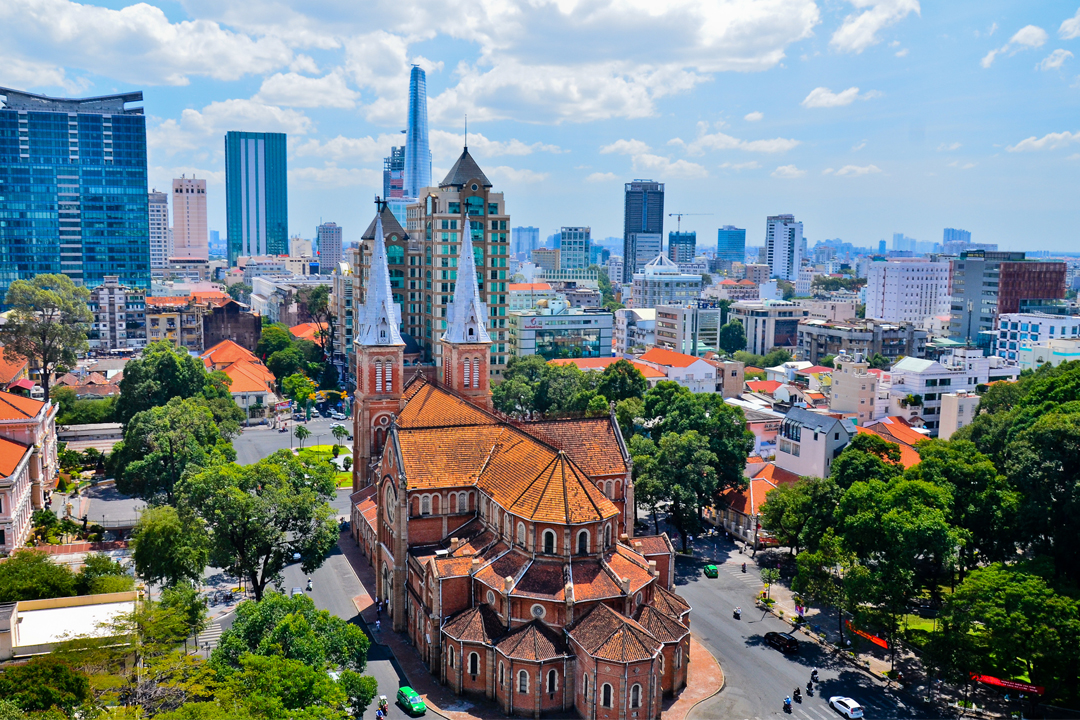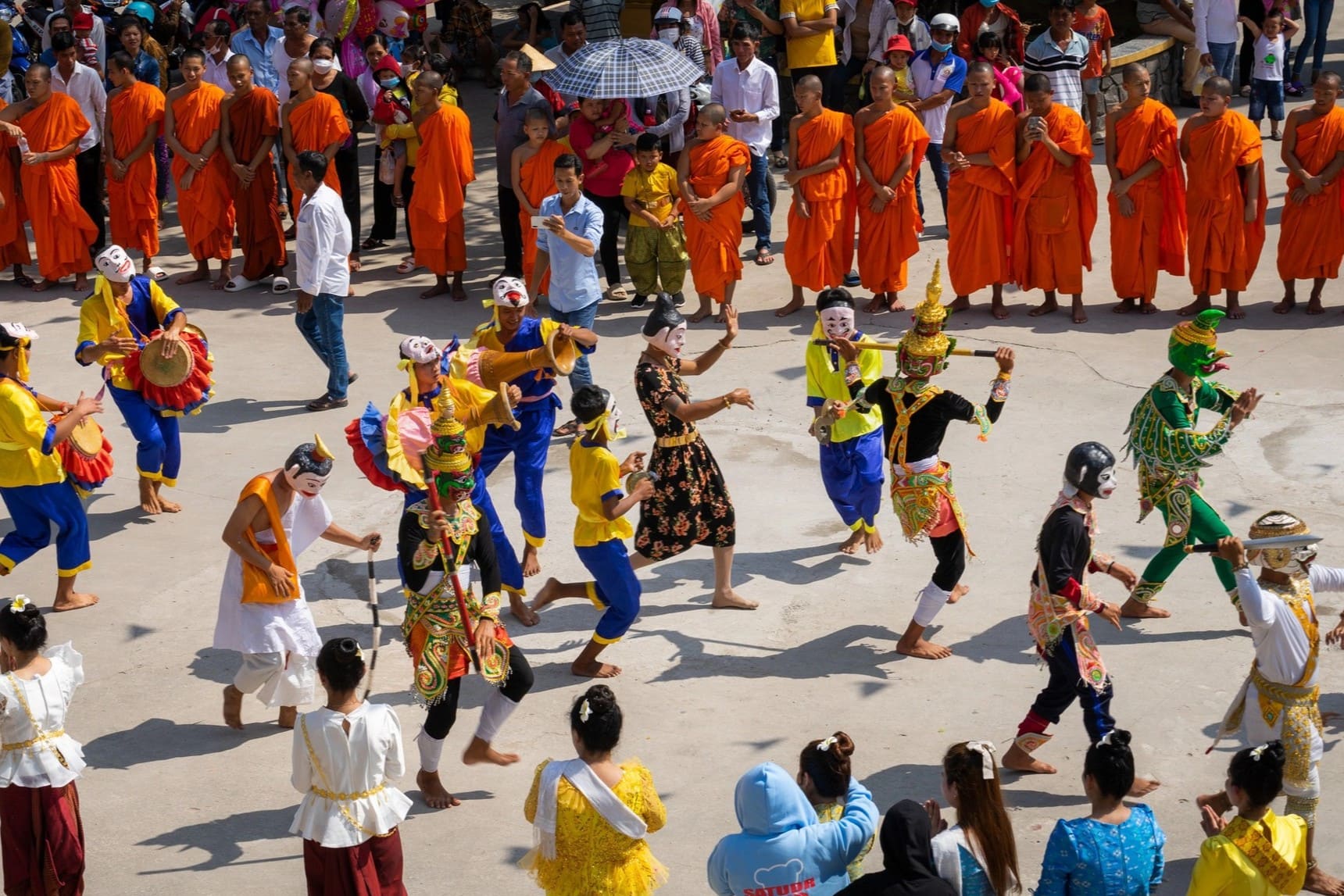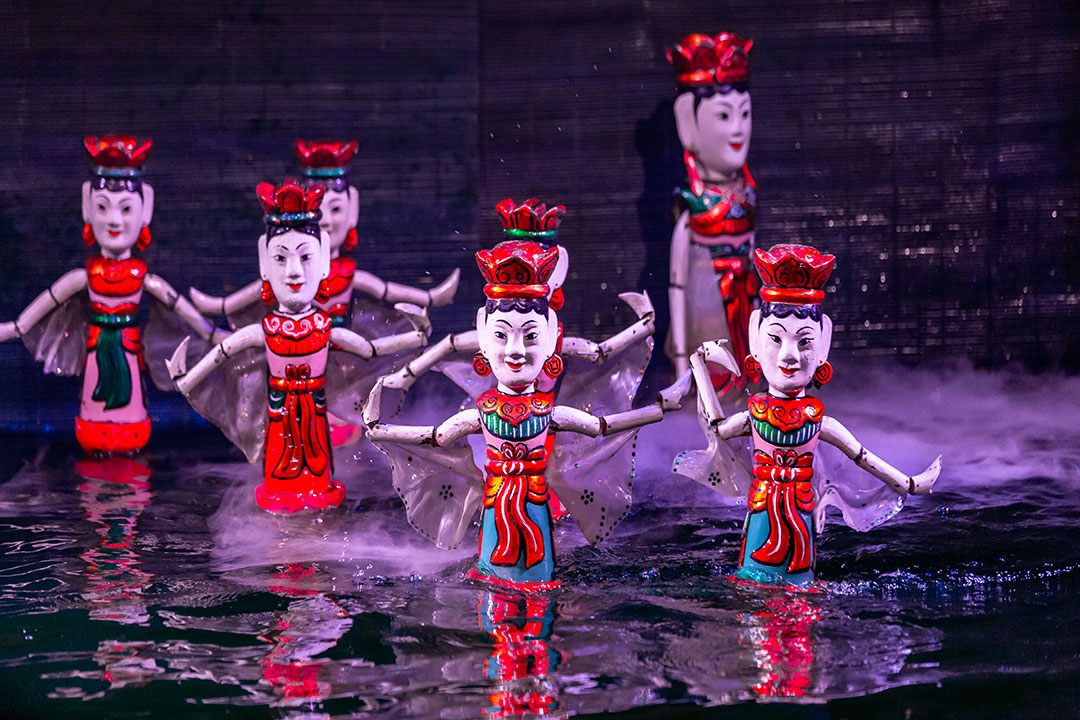Water Puppet Show: History, Technical Aspects, Tickets Prices & Travel Guide
Water puppet show is one of Vietnam’s most captivating traditional art forms. More than just a performance, this unique spectacle is a window into the country’s folklore, history, and rural traditions. Originating over a thousand years ago in the Red River Delta, water puppetry brings ancient legends to life through masterfully crafted wooden puppets that glide across a water stage. Accompanied by live traditional music, the show offers a mesmerizing blend of storytelling, artistry, and cultural symbolism that continues to enchant audiences worldwide.
Beyond its visual appeal, the technical mastery behind a water puppet show is a marvel in itself. The puppeteers, often working unseen behind a bamboo screen, must synchronize their movements perfectly to bring the puppets to life. The use of water not only adds an ethereal quality to the performance but also serves a practical function, concealing the mechanisms that create the illusion of effortless motion. Combined with colorful backdrops, fire and smoke effects, and traditional instruments like drums and bamboo flutes, water puppetry offers an immersive experience.
For travelers eager to witness this enchanting art form, knowing where and how to book tickets is essential. Hanoi’s Thang Long Water Puppet Theatre remains the most renowned venue, offering multiple daily performances that attract audiences from around the world. This guide of GTrip will help you navigate ticket prices, seating options, and the best ways to make the most of your water puppet show experience.
Overview of water puppet shows
Water puppetry is a distinctive Vietnamese art form where wooden puppets are skillfully controlled over a water stage, creating an illusion of fluid movement. Puppeteers, concealed behind a screen, use bamboo rods and strings to bring scenes from folklore, mythology, and daily rural life to life. The water serves as both a stage and a visual effect, adding a dynamic element that sets it apart from conventional puppetry.
A typical performance lasts 45 to 60 minutes and consists of multiple short skits portraying themes such as agricultural festivals, historical legends, and village traditions. Accompanied by traditional Vietnamese folk music played on instruments like the dan bau (monochord) and drums, the performances blend visual storytelling with rhythmic and melodic elements.
Deeply rooted in Vietnamese culture, water puppetry originated as a form of entertainment in rice-farming villages, performed during festivals and post-harvest celebrations. Beyond amusement, it serves as an educational tool, passing down moral lessons, customs, and historical narratives to younger generations, ensuring the preservation of cultural heritage.
In modern Vietnam, water puppetry has become a vital part of the tourism industry, attracting both local and international tourists. The Thang Long Water Puppet Theatre and Hanoi Water Puppet Theatre play key roles in preserving and evolving the tradition, incorporating contemporary elements while maintaining its cultural essence. As a timeless art form, water puppetry continues to bridge Vietnam’s rich history with the present, celebrating the nation's artistic ingenuity and community spirit.
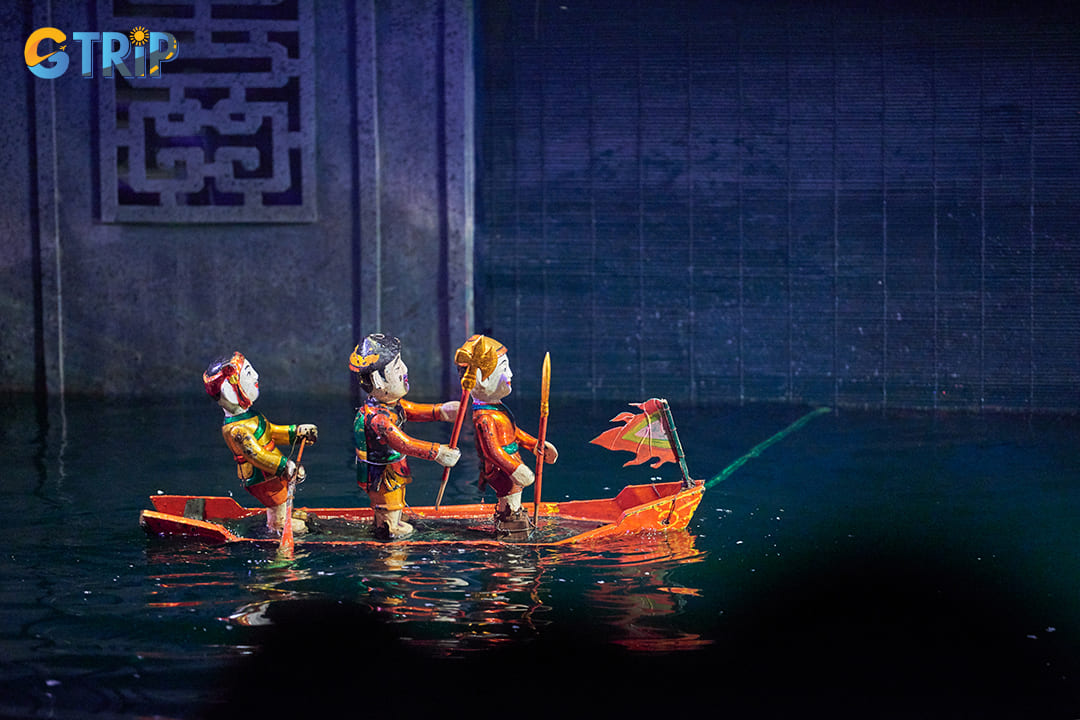
Water puppetry is a distinctive Vietnamese art form where wooden puppets are skillfully controlled over a water stage
History and origins of water puppetry
The art of water puppetry, or "mua roi nuoc" as it is known in Vietnamese, is a centuries-old tradition that originated in the Red River Delta of Northern Vietnam. It emerged during the Ly Dynasty (circa 11th century) based on historical records such as the 1121 AD inscription on the Sung Thien Dien Linh stone stele. It is a period marked by flourishing agriculture, due in part to the Delta's fertile floodplains. The communal ponds and rice paddies that sustained these early agrarian communities also provided the initial stages for this unique cultural expression.
Early beginnings in the Red River Delta
Water puppetry's roots can be traced back to the intersections of culture, environment, and social customs in the Red River Delta. The Delta, with its intricate system of waterways, created an ideal setting for villagers to innovate entertainment that was both accessible and culturally resonant. The ability to perform in venues as informal as local rice paddies or village ponds made water puppetry an inclusive and participatory form of cultural expression.
These performances often coincided with local festivals and also during the monsoon season when the rice paddies were flooded. It is believed that these initial performances served as both entertainment and a form of ritualistic invocation for blessing the harvest. Puppetry's origins in a communal agricultural setting imbued it with themes that frequently highlighted agrarian life, promoting a sense of shared identity and prosperity.
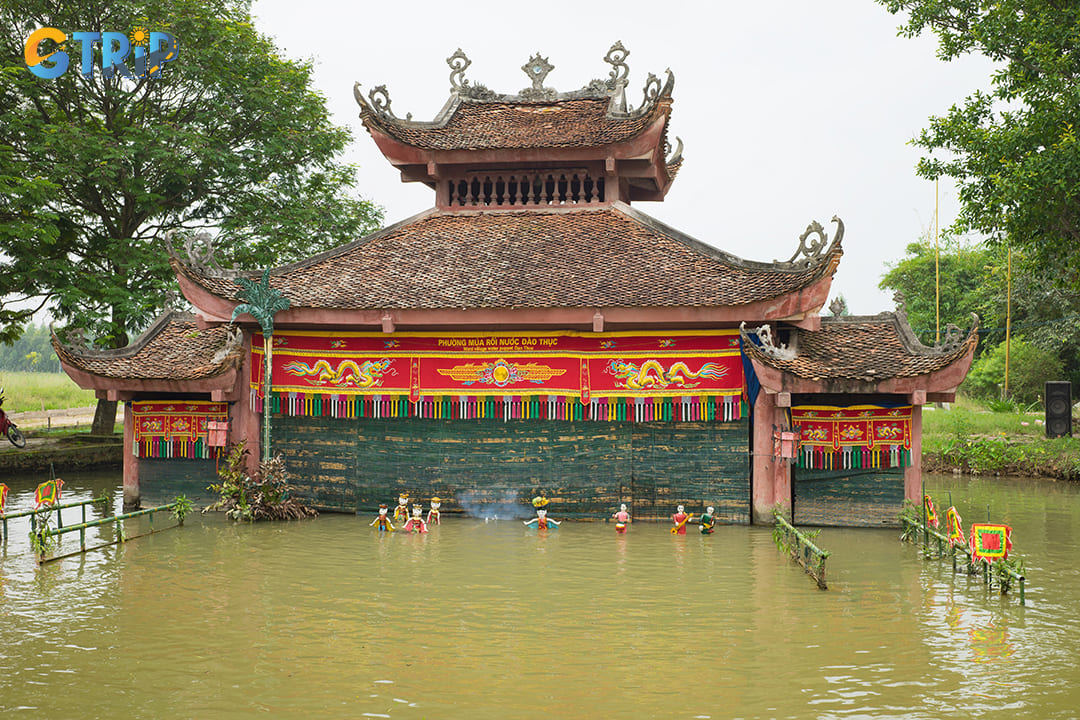
The ability to perform in village ponds made water puppetry an inclusive and participatory form of cultural expression
Evolution over the centuries
Water puppetry evolved significantly over time, preserving its agricultural roots while adapting to societal changes. As Vietnam developed through various dynasties and occasional foreign influences, new stories and complex puppet mechanisms were introduced. These changes reflected a diverse range of cultural narratives and technical advancements.
Traditional thematic elements, such as the iconic “Teu” puppet, often depicted as a jovial figure guiding the audience through the narratives, have been retained. However, over the centuries, the craft of puppet-making became more sophisticated, employing intricate carvings, detailed painting, and improved mechanics.
During the French colonial period, and especially the post-war era, water puppetry faced challenges due to modernization and the diminishing prevalence of rural village life. However, this era also provided an opportunity for revival and institutional support. Governmental and cultural organizations recognized water puppetry as a cultural heritage, promoting it for both domestic audiences and international tourists. Consequently, water puppetry transitioned from serving primarily village entertainment to being showcased on prestigious platforms, symbolizing Vietnam's rich cultural tapestry.
Today, water puppetry is celebrated not only as an artistic treasure but also as a resilient cultural artifact that bridges Vietnam's past with its present and future. Its enduring legacy is a testament to the perpetual dialogue between Vietnam's rich historical traditions and contemporary cultural expression. This historical context highlights the ingenuity and adaptability of water puppetry, a tradition that continues to enchant and educate audiences. By understanding its origins, spectators gain a deeper appreciation for the synergy of history, community, and artistry that water puppetry exemplifies.
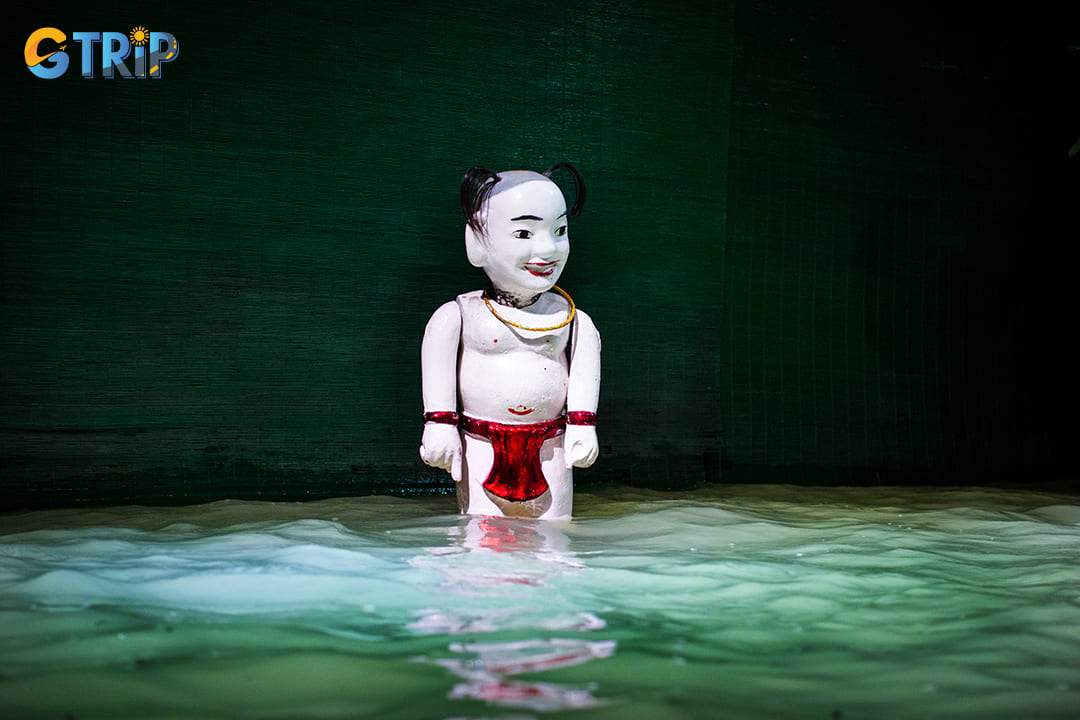
The iconic “Teu” puppet, a jovial guide for the audience, remains a key traditional element
The artistic and technical aspects of water puppetry
In the vibrant tapestry of Vietnamese culture, water puppetry stands out as a unique convergence of art and technique. Stemming from ancient practices rooted in the Red River Delta, this cultural marvel captivates audiences with its delicate balance of creativity and engineering. Exploring the artistic and technical elements intrinsic to water puppetry offers a deeper appreciation for this ancient tradition.
Puppet crafting techniques and materials
Crafting puppets for water puppet shows involves intricate artistry and robust materials. These puppets are traditionally made from fig wood due to its buoyancy and consistent texture. Artisans carve each puppet meticulously, often dedicating weeks to fashioning a single figure. Once the carving is complete, layers of lacquer are applied to enhance the puppet's durability and aesthetic appeal. Vibrant colors add to the expressive imagery strongly associated with Vietnamese folklore.
The hands-on technique of crafting each puppet ensures that the puppets are both functional and decorative. Artisans must balance between creating engaging forms that resonate with the mythological and communal stories they portray while ensuring these figures are light enough to be maneuvered effortlessly on the water. The use of natural materials not only affirms cultural authenticity but also ensures sustainability, aligning tradition with modern environmental awareness.
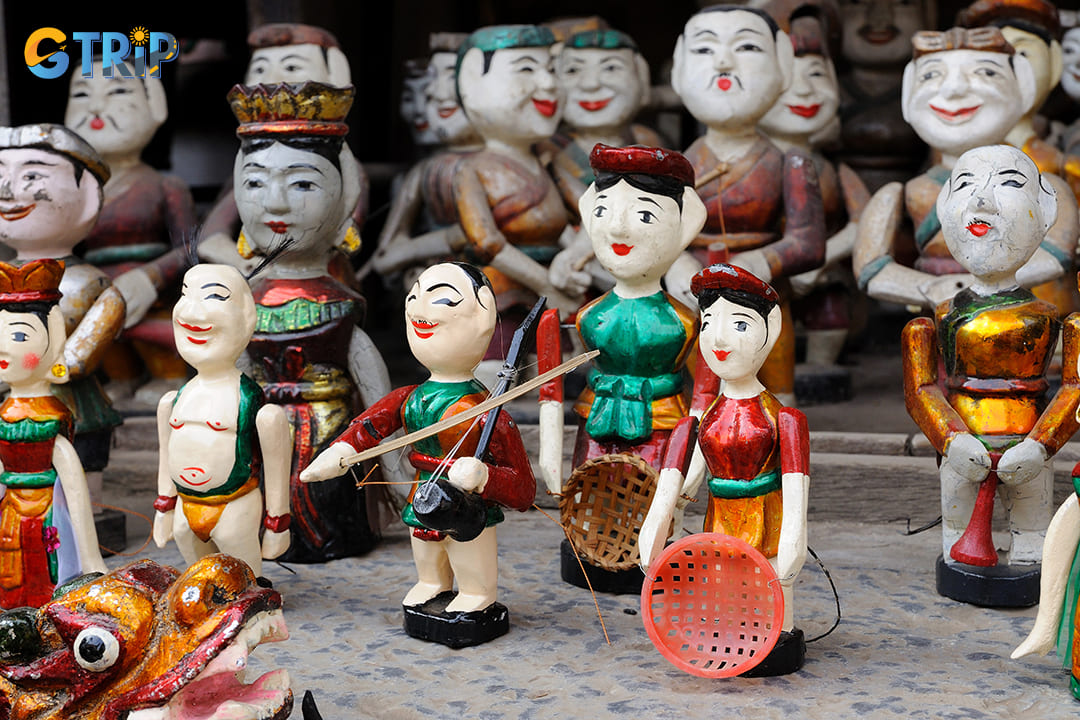
These puppets are traditionally made from fig wood due to its buoyancy and consistent texture
Mechanisms of puppet manipulation on water
A pivotal element of water puppetry is its unique performance environment: the water. The liquid stage adds an ethereal quality to performances and also presents specific technical challenges. Underneath the water, puppeteers employ complex systems of rods and strings. These mechanisms are skillfully manipulated to animate the puppets above the water in narratives that reflect the vibrancy of Vietnamese culture and the rhythms of rural life.
The puppeteers, often standing behind a split bamboo screen, work in concert to control the characters seamlessly, requiring acute precision and timing. The complexity is augmented by water's inherent resistance and variability. Utilizing techniques passed down through generations, puppeteers must instinctually adapt to the subtle shifts of the water. This mastery over the technical elements allows the puppetry to unfold with an organic fluidity that captivates audiences and preserves storytelling integrity.
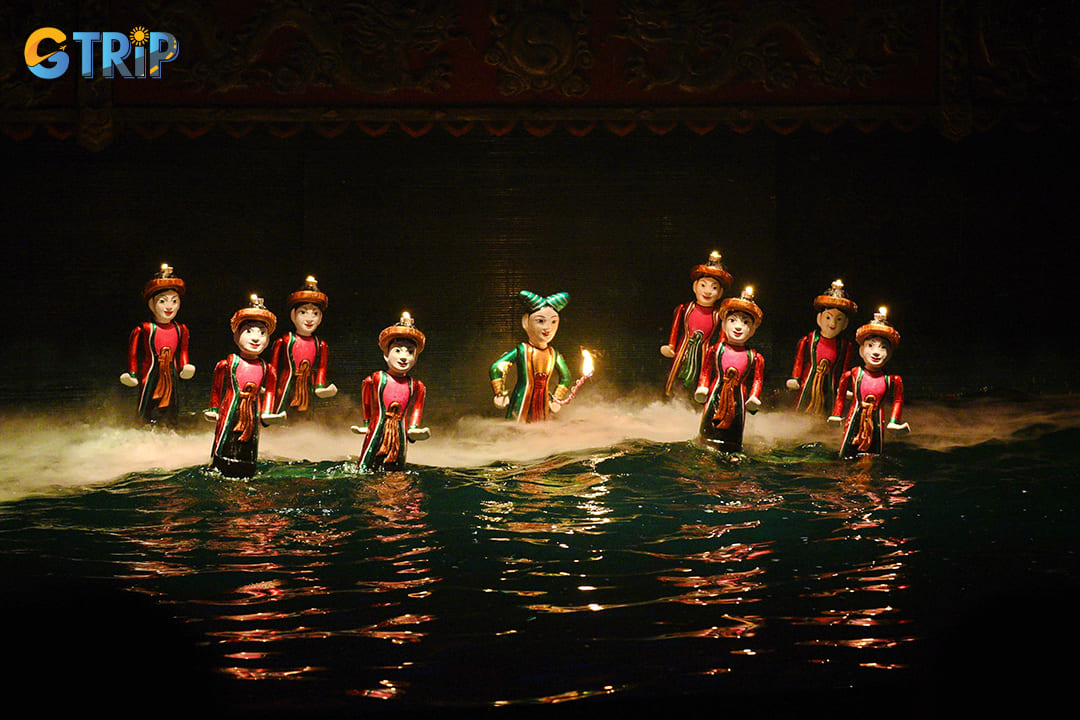
A pivotal element of water puppetry is its unique performance environment: the water
Role of traditional Vietnamese music in performances
Traditional Vietnamese music serves as the auditory soul of water puppet shows. It frames the visual spectacle, establishing mood and enhancing the thematic elements with aural textures. Instruments like the dan bau (monochord zither), dan nguyet (moon lute), and various percussion tools provide a haunting backdrop, resonating with the legends and everyday life elements that these performances embody.
Musicians play a crucial role, often integrating live improvisations that reflect the dynamic interaction between performers and the aquatic stage. This synergy between puppeteers and musicians is vital, as the tempo and intensity of the score must align with the narrative flow and the puppet movements. Music guides the story and introduces the audience to the melodic intricacies of Vietnamese culture, melding narrative with auditory exploration.
In essence, water puppetry in Vietnam exemplifies a meticulous balance of artistic endeavor and technical mastery. By navigating both the aesthetic allure and the challenging logistics of performing on water, artists, and puppeteers ensure that this ancient art form remains vibrant and evocative. This harmonious integration of diverse cultural and technical elements enables water puppetry to continue enchanting audiences, serving as a testament to Vietnam’s enduring cultural heritage.
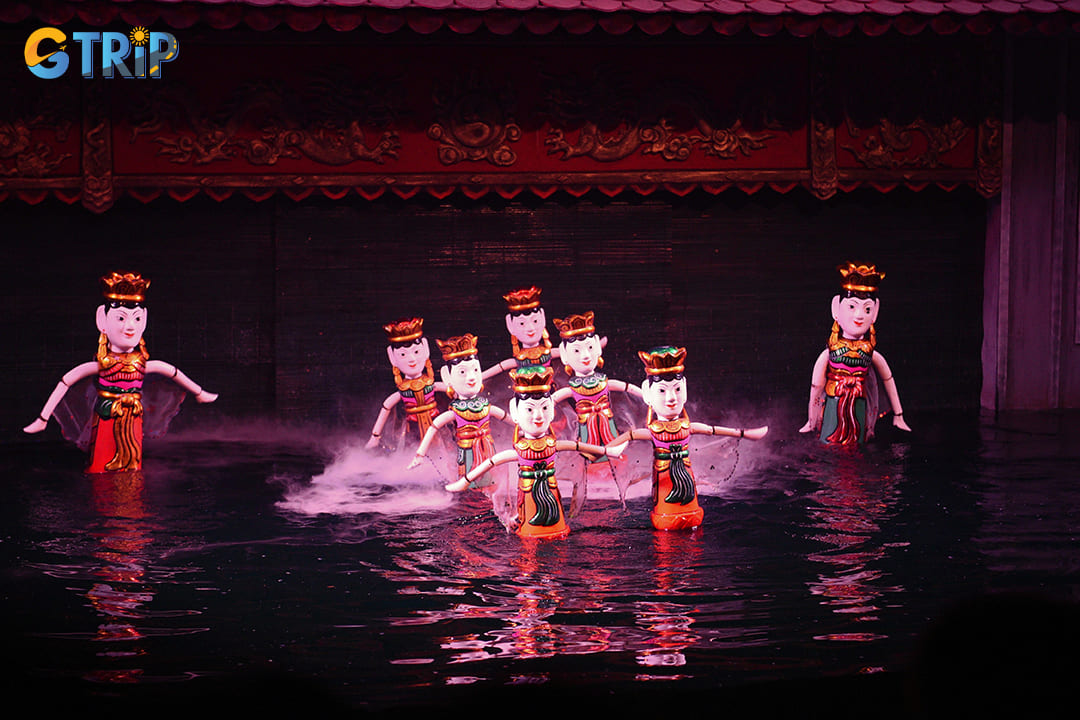
Water puppetry in Vietnam exemplifies a meticulous balance of artistic endeavor and technical mastery
Top venues to experience a water puppet show
When it comes to experiencing the enchantment of a water puppet show in Vietnam, selecting the right venue can significantly enhance your appreciation of this unique art form. Each venue presents its own distinctive ambiance and historical significance, enriching the audience's experience. Below, we delve into three top locations renowned for showcasing water puppet theatre.
Thang Long Water Puppet Theatre
Thang Long Water Puppet Theatre is located at 57B Dinh Tien Hoang Street, Hang Bac Ward, Hoan Kiem District, Hanoi. This theatre is the most renowned venue for experiencing Vietnam’s traditional water puppetry. Since its founding in 1969, it has become a cultural landmark, attracting both locals and international tourists eager to witness this unique art form.
- Authenticity and expertise: The theatre is dedicated to preserving the authenticity of water puppetry, with highly skilled puppeteers who have mastered the craft through years of rigorous training. Each performance is enriched with live traditional music played on authentic Vietnamese instruments such as the dan bau and drums, creating a harmonious blend of sound and storytelling.
- Renovated facilities: Recent renovations have modernized the theatre while maintaining its traditional charm. An air-conditioned auditorium and tiered seating ensure a comfortable viewing experience, allowing spectators to fully appreciate the intricate movements and artistry of the puppets.
With daily performances showcasing tales from Vietnamese folklore and rural life, the Thang Long Water Puppet Theatre remains an essential cultural destination in Hanoi.
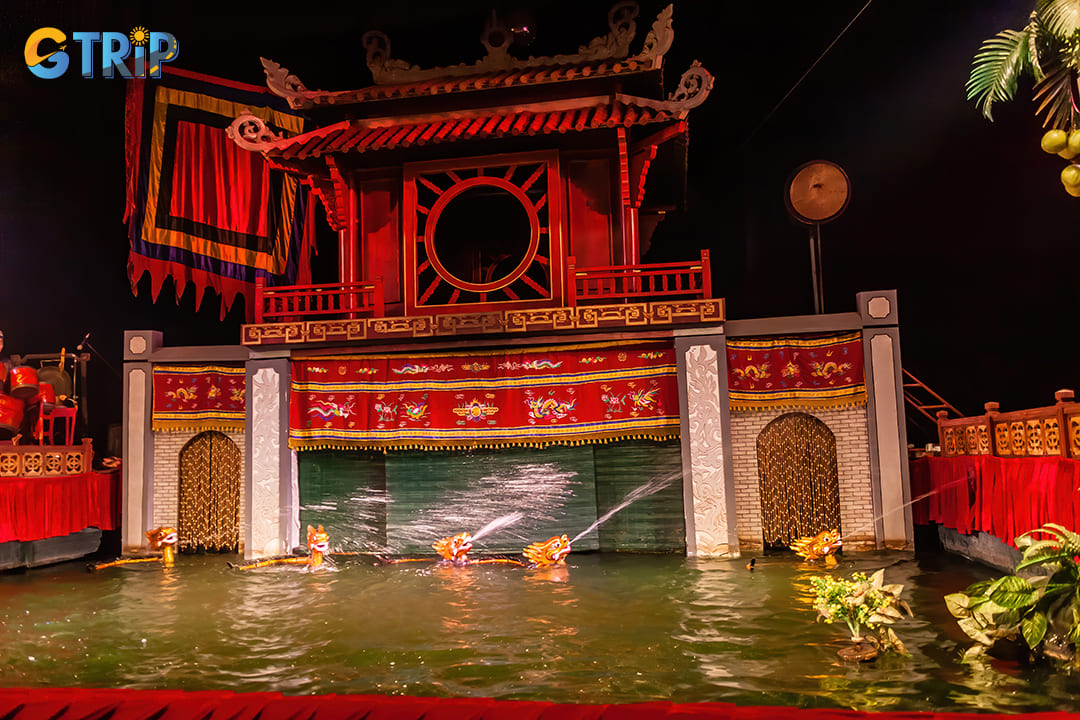
Thang Long Water Puppet Theatre is the most renowned venue for experiencing Vietnam’s traditional water puppetry
Vietnam National Puppetry Theatre
Established in 1956, the Vietnam National Puppetry Theatre stands as the premier institution dedicated to preserving and advancing Vietnam's rich puppetry traditions. Located at 361 Truong Chinh, Thanh Xuan, Hanoi, this esteemed venue serves as the largest hub for puppetry arts in the country, featuring a team of distinguished artists, including People's Artists and Meritorious Artists.
- Diverse puppetry forms: Renowned for its captivating water puppet performances. The theatre also showcases various puppetry styles, such as glove puppets and rod puppets, offering audiences a comprehensive experience of Vietnam's puppetry heritage.
- Cultural preservation and innovation: The theatre is committed to both preserving traditional puppetry techniques and innovating new performances that reflect contemporary themes, ensuring the art form remains vibrant and relevant.
- Educational outreach: Beyond performances, the theatre engages in educational initiatives through workshops and training programs. These efforts nurture the next generation of puppeteers and educate the public about this unique aspect of Vietnamese culture.
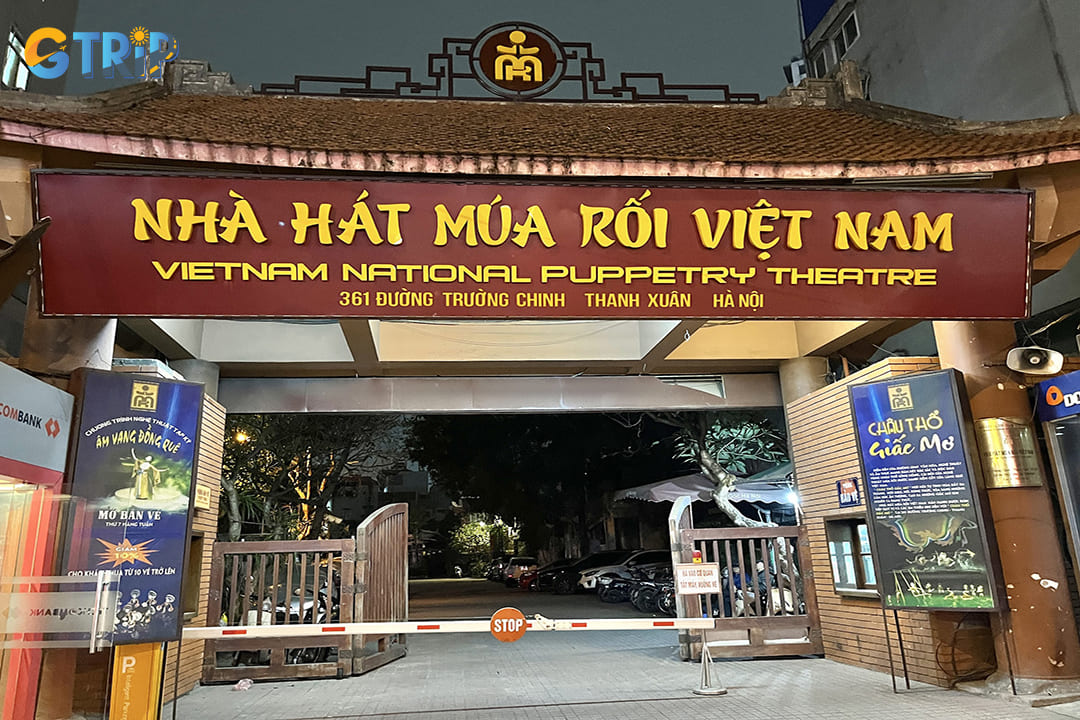
Vietnam National Puppetry Theatre stands as the premier institution dedicated to preserving and advancing Vietnam's rich puppetry traditions
Lotus Water Puppet Theater
Situated at 16 Le Thai To Street, Hang Trong, Hoan Kiem, Hanoi, the Lotus Water Puppet Theater offers an intimate setting for experiencing the traditional art of water puppetry. Nestled within the "Viet Culture Space", a cultural and culinary complex, the theater provides a unique blend of artistic performance and cultural immersion.
- Authentic performances: The theater presents traditional water puppet shows that depict scenes from Vietnamese folklore and rural life, accompanied by live music from skilled musicians. With multiple daily performances, including shows at 4:00 PM, 5:15 PM, and 6:30 PM, you have ample opportunities to witness this enchanting art form.
- Cultural ambiance: The theater's location within the "Viet Culture Space" enhances the cultural experience, allowing you to explore Vietnamese heritage through both performance and the surrounding environment.
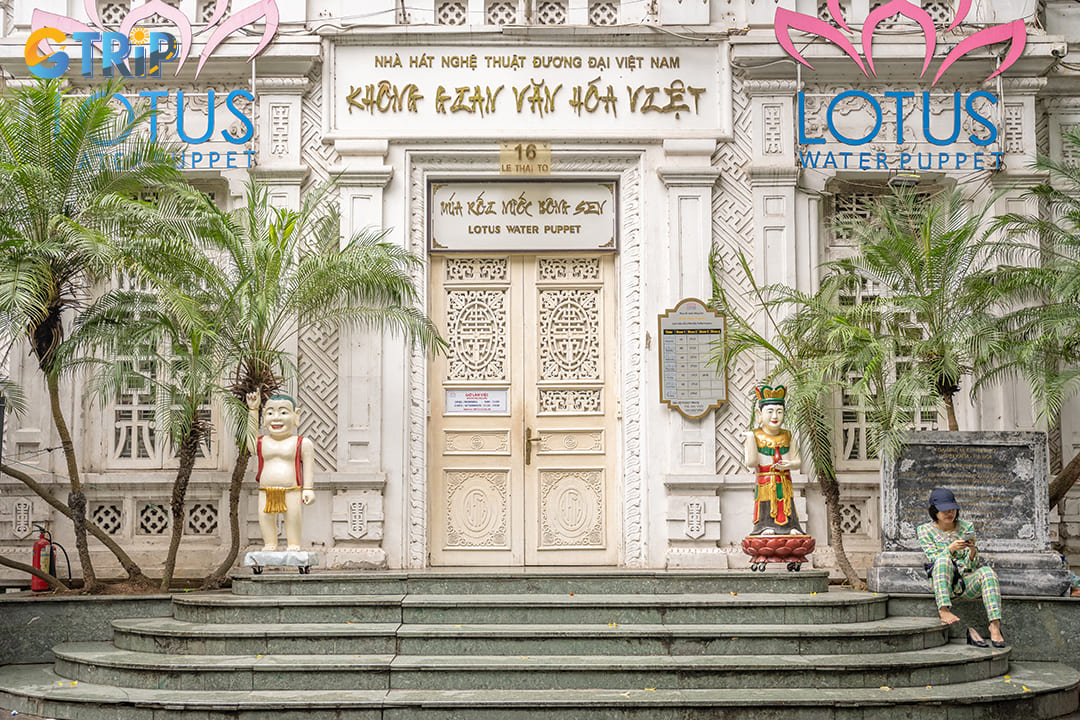
The Lotus Water Puppet Theater offers an intimate setting for experiencing the traditional art of water puppetry
Choosing the right venue can greatly influence your water puppet show experience, from witnessing the grandeur at Thang Long to enjoying intimate stories at Hanoi. Each setting promises an unforgettable glimpse into Vietnamese cultural heritage, offering a harmonious blend of artistry, history, and folklore.
Ticket prices and showtimes for different theaters in Hanoi
Water puppet shows are a must-see cultural experience in Hanoi, drawing both locals and international tourists. Ticket prices and showtimes vary depending on the venue, seating options, and performance schedules. Below is detailed information to help tourists choose the best water puppet show for their visit.
Thang Long Water Puppet Theatre
As one of the most renowned venues, ticket prices range from 100,000 to 200,000 VND (approximately $4 to $9). The pricing is based on seating arrangements:
- General seating (3rd row, farthest from the stage): 100,000 VND
- Standard seating (2nd row): 150,000 VND
- VIP seating (1st row, closest to the stage): 200,000 VND
- Children under 1.2 meters: 60,000 VND
- Additional fees apply for camera usage (20,000 VND) and video recording (60,000 VND).
Showtimes:
- Monday to Saturday: 1:45 PM, 3:00 PM, 4:10 PM, 5:20 PM, 6:30 PM, 8:00 PM, 9:15 PM.
- Sunday: 9:30 AM, 1:45 PM, 3:00 PM, 4:10 PM, 5:20 PM, 6:30 PM, 8:00 PM, 9:15 PM.
Tickets can be purchased at the theatre's box office. It’s advisable to book in advance, especially during peak tourist seasons.
Vietnam National Puppetry Theatre
The Vietnam National Puppetry Theatre offers a broader range of puppetry performances, including water puppetry.
- Ticket price: From 120,000 VND to 400,000 VND ($5 - $16).
- Showtime: Generally at 8:00 PM, though schedules may vary.
Tickets can be purchased at the theatre’s box office. Advanced reservations are recommended for weekend shows.
Lotus Water Puppet Theater
Situated within the "Viet Culture Space", this venue provides an intimate setting for water puppetry.
- Ticket Price: 150,000 VND per person ($6.50).
- Children under 1.2 meters: May receive discounts (contact the theatre for details).
- Showtimes: Daily at 4:00 PM, 5:15 PM, and 6:30 PM.
Tickets are available at the box office, and advance booking is recommended for preferred showtimes.
These prices are indicative of current rates but may vary due to seasonal changes or special events. It's best to check with the theatres directly or visit their official websites before purchasing tickets.
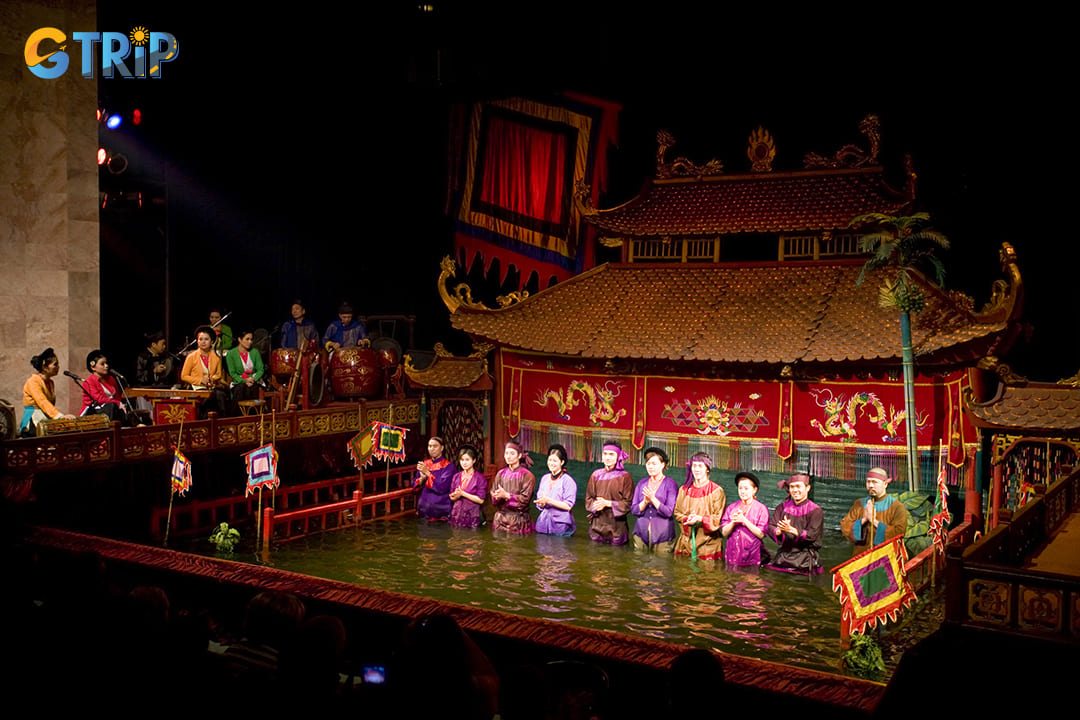
Water puppet shows are a must-see cultural experience in Hanoi, drawing both locals and international tourists
Here are some useful tips for purchasing water puppet show tickets:
- Book online for convenience: Use official theatre websites or reputable travel platforms like Viator and Klook to secure your tickets in advance, especially during peak seasons. Online bookings may also offer discounts.
- Buy in person for flexibility: If you prefer a personal touch, visit the theatre’s box office. Arriving early increases your chances of getting preferred seating.
- Choose reputable sellers: To avoid scams, only book through trusted websites or authorized local travel agencies.
To optimize your visit, consider aligning your trip with both regular and special event performances. Purchasing tickets in advance, either online or at the venue prior to the show, is advisable, particularly during peak seasons to ensure availability. Monitoring official channels, such as theatre websites and trusted travel resources, for updated schedules and potential changes is crucial for an accurate plan.
How to get to each water puppet theater?
Navigating Hanoi to attend water puppet performances is straightforward, given the city's compact layout and various transportation options. Below are detailed directions to each theater:
Thang Long Water Puppet Theatre
Address: 57B Dinh Tien Hoang Street, Hang Bac Ward, Hoan Kiem District, Hanoi
Directions:
- By taxi or ride-hailing services: Given Hanoi's bustling traffic, taxis and ride-hailing services like Grab are convenient options. Simply input the theater's address into the app or provide it to the driver.
- By public bus: Several bus routes pass near Hoan Kiem Lake. Look for buses stopping at Dinh Tien Hoang Street or nearby streets. It's advisable to check the latest bus schedules and routes via local transit apps or inquire about your accommodation.
- On foot: If you're staying in or near Hanoi's Old Quarter, the theater is within walking distance. A stroll through the vibrant streets offers a delightful experience en route to the show.
Vietnam National Puppetry Theatre
Address: 361 Truong Chinh Street, Thanh Xuan District, Hanoi
Directions:
- By taxi or ride-hailing services: Given the theater's location away from the central tourist areas, taxis or ride-hailing services are the most direct and comfortable means of transportation.
- By public bus: Various bus routes serve Truong Chinh Street. It's recommended to consult local transit resources or your accommodation for the most accurate and up-to-date information on bus numbers and schedules.
- By motorbike: For those comfortable with navigating Hanoi's traffic, renting a motorbike provides flexibility. Ensure you have appropriate licensing and are familiar with local traffic laws.
Lotus Water Puppet Theater
Address: 16 Le Thai To Street, Hang Trong Ward, Hoan Kiem District, Hanoi
Directions:
- By taxi or ride-hailing services: Provide the address to your driver or input it into your ride-hailing app for a straightforward journey.
- By public bus: Buses that stop near Hoan Kiem Lake or Le Thai To Street will get you close to the theater. Verify current routes and schedules through local transit applications or by asking at your lodging.
- On foot: Situated near Hoan Kiem Lake, the theater is easily accessible on foot from the Old Quarter. Walking allows you to enjoy the scenic surroundings before the performance.
By selecting the transportation method that aligns with your comfort and convenience, you can look forward to an enjoyable experience at Hanoi's esteemed water puppet theaters.
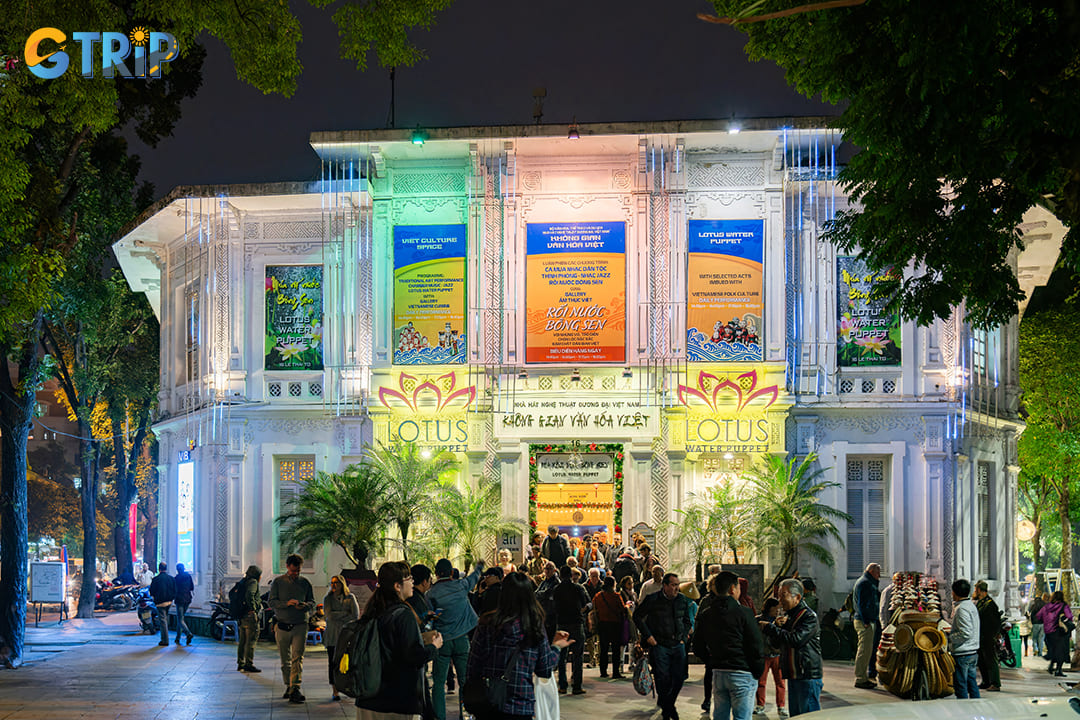
Navigating Hanoi to attend water puppet performances is straightforward, given the city's compact layout and various transportation options
Visitor tips for an unforgettable experience
Planning to attend a water puppet show in Vietnam requires the right venue or a ticket but also an understanding of how to maximize your experience for cultural and immersive enjoyment. Here's a comprehensive guide to ensure your time at this Vietnamese traditional art form is memorable.
Best seating options for optimal viewing
Choosing the best seats is crucial to enjoying the intricate details and artistry of a water puppet show. Most theatres offering water puppetry, such as the Thang Long Water Puppet Theatre and the Hanoi Water Puppet Theatre, have seating arrangements that can greatly impact your viewing experience.
- Front-row seats provide an unobstructed view of the puppets and allow you to appreciate the skill involved in their manipulation. However, seats too close to the water stage might occasionally get splashed, enhancing the immersive experience but possibly uncomfortable for some.
- Middle-section seats offer a balanced view of both the puppets and the live musicians who are a critical element of the performance. These seats are ideal for those who want to experience the full spectacle, including the traditional Vietnamese music that accompanies each act.
- Balcony or elevated seats can offer a panoramic view of the entire stage, beneficial for capturing the overall dynamics of the performance. These are particularly advantageous for photography enthusiasts aiming to capture broad scenes.
It’s recommended to book tickets in advance, especially during peak seasons, as the best seats can sell out quickly.
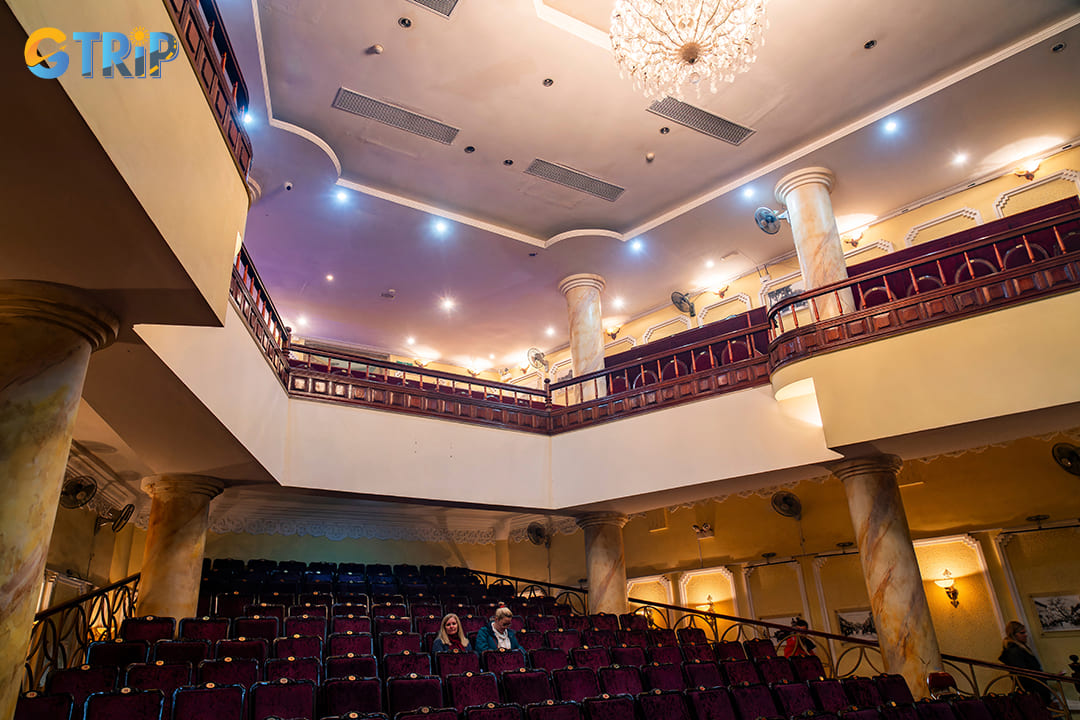
Choosing the best seats is crucial to enjoying the intricate details and artistry of a water puppet show
Photography rules and etiquette
Photography can be an excellent way to capture the enchanting moments of a water puppet show, but it’s important to respect the rules and customs associated with it.
- Ask for permission: Some venues may allow photography, but it’s courteous to ask theatre staff beforehand. Flash photography is typically discouraged as it can distract both performers and fellow audience members.
- Photography without disruption: If allowed, ensure that your photography does not disrupt the experience for others. Use quiet cameras and avoid moving around excessively during the performance.
- Share responsibly: When sharing your photos on social media or with friends, provide context to the images. Sharing cultural importance and personal insights can help others appreciate this unique art form and respect its practice.
By paying attention to these tips, you can transform their attendance at a water puppet show from a mere sightseeing activity into an engaging, culturally rich experience. These insights will undoubtedly enhance your appreciation and enjoyment of this ancient Vietnamese art form.
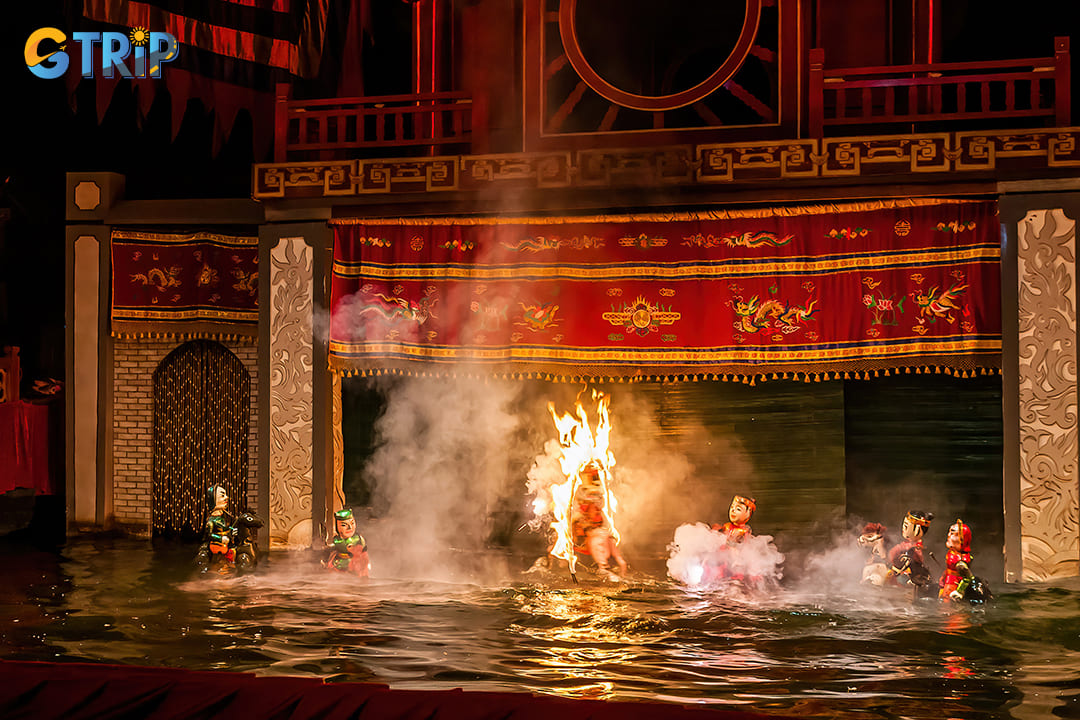
Photography can be an excellent way to capture the enchanting moments of a water puppet show
The water puppet show is a standout testament to the profound cultural depth and artistic ingenuity of Vietnam. Water puppetry is singular in its integration of dramatic storytelling with elaborate puppetry, all crafted to unfold atop a shimmering aquatic stage. Over the centuries, water puppetry has proven to be a vessel of cultural preservation, offering glimpses into the historical narratives and everyday life of Vietnamese communities. Water puppetry is a must-see when journeying through Vietnam. To fully immerse yourself in Vietnam’s cultural wonders such as the water puppet show, consider booking your trip with GTrip - Vietnam Travel Agency.

